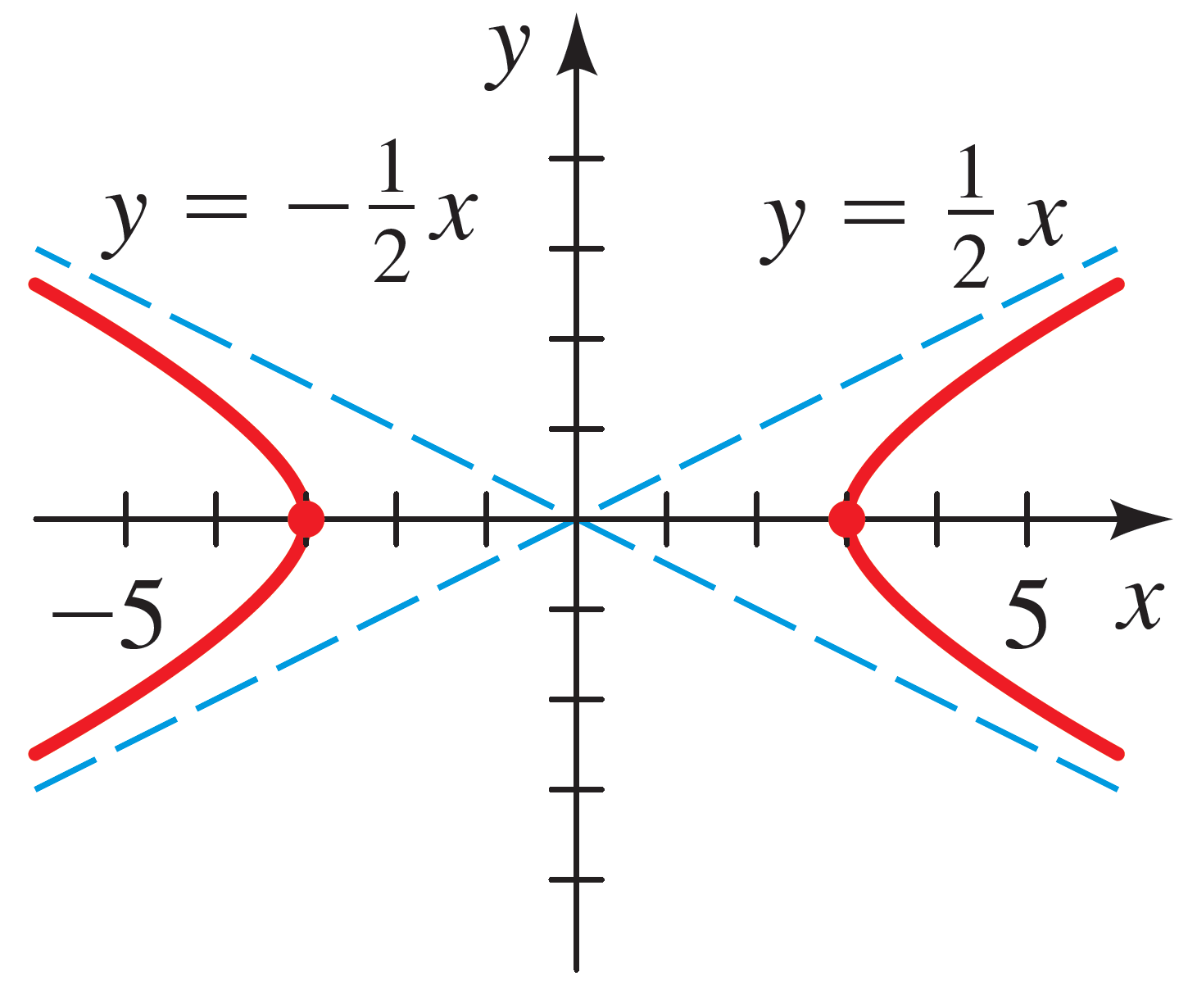Homework 10
Directions:
- Show each step of your work and fully simplify each expression.
- Turn in your answers in class on a physical piece of paper.
- Staple multiple sheets together.
- Feel free to use Desmos for graphing.
Answer the following:
- For each of the following problems, find an equation of the hyperbola with vertex at the origin satisfying the following conditions or state it's impossible to.
- Foci $(\pm 5, 0)$, vertices $(\pm 3, 0)$
- Foci $(0, \pm \sqrt{10})$, vertices $(\pm 1, 0)$
- Asymptotes $y = \pm x$, vertices $(0, \pm 3)$
- Length of transverse axis is 6, oriented vertically.
Hint: find the vertices. - Foci $(\pm 5, 0)$, length of transverse axis is 6
- This hyperbola:

- Consider the hyperbola \[\dfrac{x^2}{4} - \dfrac{y^2}{8} = 1\] If I want to shift it three units right and four units down, what is the new formula?
- For the following ellipses, sketch the graph and find the foci.
- $\dfrac{x^2}{9} + \dfrac{(y+5)^2}{25} = 1$
- $\dfrac{(x + 1)^2}{36} + \dfrac{(y+1)^2}{64} = 1$
- $25(x-1)^2 + 9(y-2)^2 = 25 * 9$
- For the following parabolas, sketch the graph and find the focus.
- $(x-3)^2 = 8(y+1)$
- $(y+1)^2 = 16(x - 3)$
- $y^2 - 6y - 12x + 33 = 0$
- $x^2 + 2x - 20y + 41 = 0$
- For the following hyperbolas, sketch the graph and find the foci.
- $\dfrac{(x + 1)^2}{9} - \dfrac{(y-3)^2}{16} = 1$
- $x^2 - 2x + 1 - (y^2 - 2y + 1) = 1$
- $4(y-1)^2 - (x+1)^2 = 16$